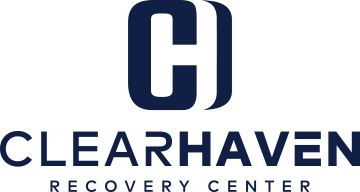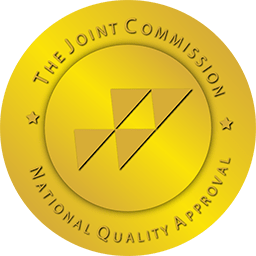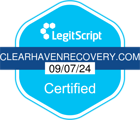Addiction has been a part of human history for centuries. The ancient Greeks and Romans wrote about it, and in the 18th and 19th centuries, addiction to opium was rampant in China and Great Britain. However, it wasn’t until the 20th century that addiction began to be seen as a disease rather than a moral failing. The first formal addiction treatment programs were established in the 1930s, and since then, various forms of treatment have been developed, including medication-assisted treatment (MAT).
Despite the advances in addiction treatment, there is still a significant amount of stigma surrounding addiction and the various treatments available. MAT has faced particular scrutiny, with many people believing that it is simply trading one addiction for another or that it is a cop-out for those who aren’t “strong enough” to quit on their own. However, the reality is that MAT has been proven to be an effective tool in the fight against addiction, especially when combined with counseling and other forms of support.
The history of addiction treatment
Addiction has been a part of human history for centuries, and for much of that time, it was seen as a moral failing rather than a disease. It wasn’t until the 20th century that addiction began to be seen as a disease that required treatment. The first formal addiction treatment programs were established in the 1930s, with the founding of Alcoholics Anonymous (AA) and other 12-step programs. These programs emphasized abstinence and peer support as the keys to recovery.
Over time, other forms of treatment were developed, including behavioral therapy and medication-assisted treatment. Behavioral therapy focuses on changing the addict’s thought patterns and behaviors, while medication-assisted treatment uses medications to help manage withdrawal symptoms and reduce cravings. Medications like methadone and buprenorphine have been shown to be effective in helping people overcome addiction.
The stigma surrounding MAT
Despite the effectiveness of MAT, there is still a significant amount of stigma surrounding it. Many people believe that it is simply trading one addiction for another or that it is a cop-out for those who aren’t “strong enough” to quit on their own. This stigma can prevent people from seeking the treatment they need, which can have serious consequences.
One reason for the stigma is the misconception that MAT is simply substituting one addiction for another. However, this is not the case. Medications like methadone and buprenorphine are long-acting opioids that do not produce the euphoria associated with drugs like heroin. They help manage withdrawal symptoms and reduce cravings, allowing the addict to focus on their recovery.
MAT and the opioid epidemic
The opioid epidemic has brought the issue of addiction and its treatments to the forefront of public consciousness. Opioid addiction is a serious and growing problem, with millions of people affected worldwide. MAT has been shown to be an effective tool in combating opioid addiction, but there is still resistance to its use.
One reason for this resistance is the misconception that MAT is simply trading one addiction for another. However, as mentioned earlier, medications like methadone and buprenorphine do not produce the euphoria associated with drugs like heroin. They help manage withdrawal symptoms and reduce cravings, allowing the addict to focus on their recovery. MAT has been shown to reduce the risk of overdose and increase the likelihood of long-term recovery.
How MAT works
MAT works by using medications to help manage withdrawal symptoms and reduce cravings. The medications used in MAT are long-acting opioids that do not produce the euphoria associated with drugs like heroin. They help stabilize the addict’s brain chemistry, allowing them to focus on their recovery.
MAT is usually combined with counseling and other forms of support, such as 12-step programs or peer support groups. This combination of medication and support has been shown to be highly effective in helping people overcome addiction.
Types of medications used in MAT
There are several medications used in MAT, including methadone, buprenorphine, and naltrexone. Methadone is a long-acting opioid that has been used for decades to help people overcome opioid addiction. Buprenorphine is a newer medication that works in a similar way to methadone but has a lower risk of overdose. Naltrexone is a non-opioid medication that blocks the effects of opioids, reducing the risk of relapse.
The choice of medication depends on the individual’s needs and the severity of their addiction. A healthcare provider will work with the addict to determine the best course of treatment.
Benefits of MAT
MAT has been shown to have several benefits, including:
- Reducing the risk of overdose
- Reducing the risk of relapse
- Improving physical and mental health
- Improving social functioning
- Reducing criminal behavior
- Improving quality of life
MAT is a highly effective tool in the fight against addiction when combined with counseling and other forms of support.
Common misconceptions about MAT
There are several common misconceptions about MAT, including:
- MAT is simply trading one addiction for another
- MAT is a cop-out for those who aren’t “strong enough” to quit on their own
- MAT is only for people with severe addictions
However, as we’ve seen, these misconceptions are not true. MAT is an effective tool in the fight against addiction, and it is not simply trading one addiction for another. It is also not a cop-out, as addiction is a complex and multifaceted disease that often requires medical intervention.
Finding a MAT program
If you or a loved one is struggling with addiction, it is important to seek help. There are many MAT programs available, and a healthcare provider can help you find the one that is right for you. MAT is usually combined with counseling and other forms of support, so it is important to find a program that offers these services as well.
Conclusion
Addiction is a complex and multifaceted disease that requires a comprehensive approach to treatment. Medication-assisted treatment (MAT) is one tool in the fight against addiction, and it has been shown to be highly effective when combined with counseling and other forms of support. Despite the effectiveness of MAT, there is still a significant amount of stigma surrounding it. By understanding the benefits of MAT and debunking the common myths and misconceptions, we can help break down the stigma and ensure that everyone who needs help can get the treatment they deserve.
If addiction is present in your life or the life of someone you care for, don’t hesitate to ask for help. The right assistance will put you on the path to healing. Ready to get started? Call us today at 833.970.2054. Our counselors are available 24 hours a day.











